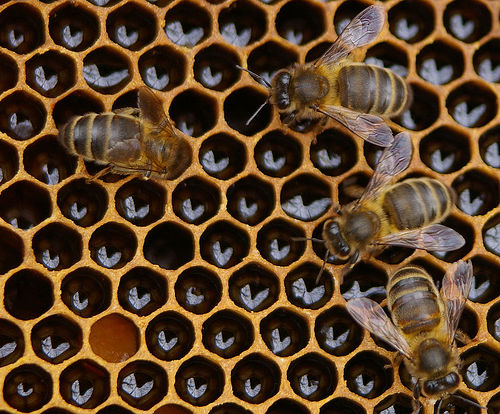Field Talk: Uniformity and diversity in the Homogecene era
 Imagine a small town where everything is uniform—a tiny community of individuals who eat the same meals and pair up with people with similar qualities and traits. The scenery is stripped down: one church, one pub and cookie-cutter houses. Now add in social interactions. Greetings occur but they have few variations; life is routine. And just a few miles over in a town with the same layout, similar individuals are interacting, eating and greeting, in all the same ways.
Imagine a small town where everything is uniform—a tiny community of individuals who eat the same meals and pair up with people with similar qualities and traits. The scenery is stripped down: one church, one pub and cookie-cutter houses. Now add in social interactions. Greetings occur but they have few variations; life is routine. And just a few miles over in a town with the same layout, similar individuals are interacting, eating and greeting, in all the same ways.
This setting and these processes roughly describe a scene that is occurring in habitats around the world, a phenomenon that ecologists are all too familiar with: the homogenization of species and, according to research published in the June issue of Ecology, interactions between species. This research takes place in the deforested habitats of Manabi in southwest Ecuador: Etienne Laliberté and Jason Tylianakis from the University of Canterbury in New Zealand found that the food webs and interactions between parasitoids and their bee and wasp hosts were simplified and homogenized across fragmented habitats.
The researchers proposed that the lack of canopy cover in the managed and abandoned coffee agroforests, pasture and rice fields in the region allowed parasitoids to locate and oviposit in their bee and wasp hosts more easily (compared to the variations in the processes in the nearby rainforests). In the most recent edition of Field Talk—a podcast by the Ecological Society of America focusing on research from three of the Society’s journals, Ecology, Ecological Applications and Ecological Monographs—Tylianakis explained that the parasitoids might have an easier time locating their hosts in the open and less complex habitat of the deforested areas.
The simplified structure of these habitats, compared to the more complex structure of the canopied forest, led to a decrease in the diversity of interactions. In addition, the same, simplified interactions were occurring in almost all of the rice fields, despite the distance between them.
It seems, then, that the homogenization of species extends into the realm of species interactions as well—at least, in a deforested habitat. As the authors mention in the study, these findings indicate “the global erosion of regional diversity due to unprecedented current rates of species exchange.” In other words, as global biodiversity declines, so too does the diversity of species interactions and regional food webs. Habitat destruction, invasive species and other stressors may be driving the Earth toward what Tylianakis describes as the “Homogecene era” in the podcast:
Species are going extinct globally and in many places they are being replaced by the new invasions of globally widespread species. This means that the distinctness of global floras and faunas is actually declining and are becoming more similar or homogenized at the regional scale. This is a major concern because loss of regional diversity can reduce the insurance value of having those species around. And the same is being argued for the loss of genetic diversity at a regional scale. What we’ve shown is that the same is also true for the diversity of food web interactions.
The homogenization of these stripped-down habitats is similar to what happened in the small community and its nearby towns: a lack of diversity of structures, meals and interactions. So what would happen to these towns if something new and abrupt came along, such as a fungus that attacked wheat fields? Would the community know to eat something besides bread? This is one of the issues ecologists are pursuing—how to prevent and/or plan for the Homogecene era and the potential widespread effects.
Laliberté, E., & Tylianakis, J. (2010). Deforestation homogenizes tropical parasitoid–host networks Ecology, 91 (6), 1740-1747 DOI: 10.1890/09-1328.1
Photo credit: Max xx